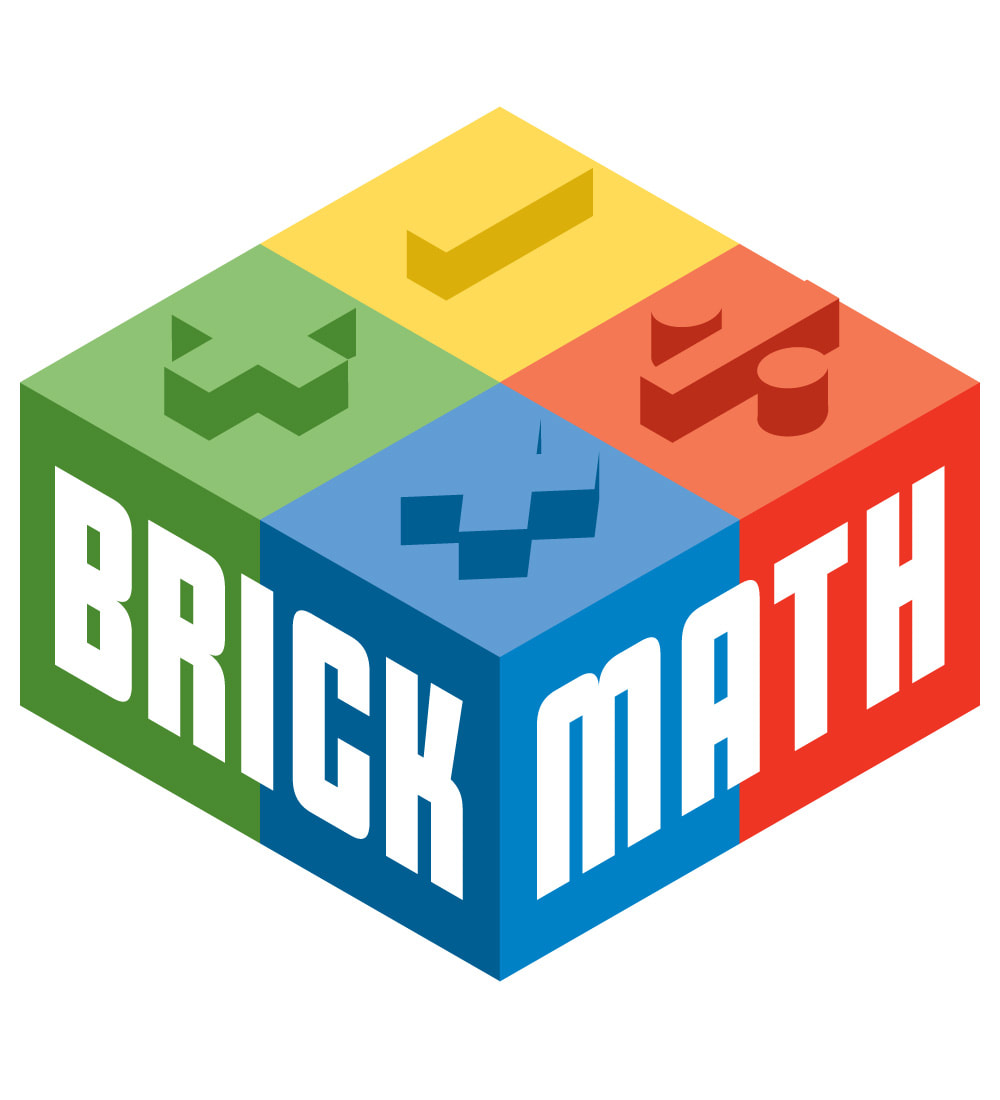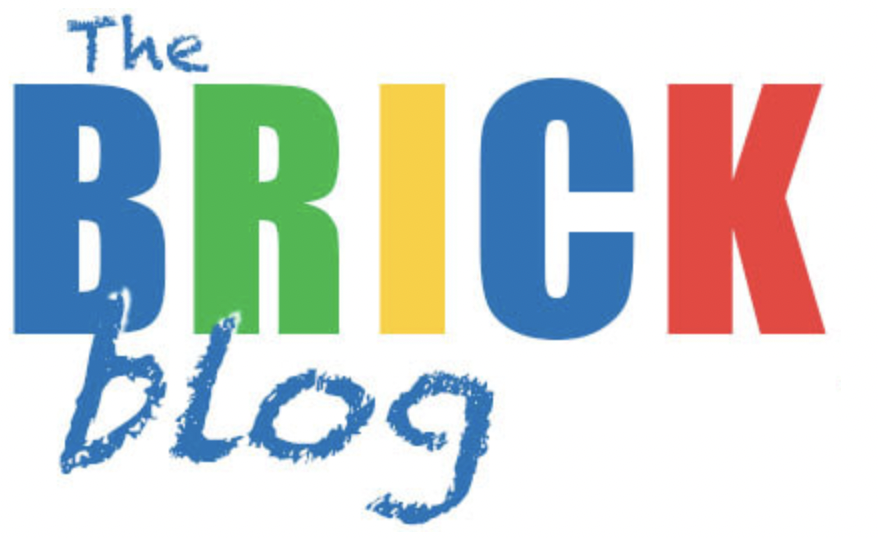 This month's free Brick Math Lesson of the Month is a game for students to play that reinforces multiplication terminology and skills. You can get the Blocks and Bricks Game, from Brick Math Multiplication, by clicking here, and you'll get a new free Brick Math lesson every month after that.  The Blocks and Bricks Game is played in pairs. Each student rolls a die twice, first to establish their multiplier and then their multiplicand. They then build blocks representing the multiplier and fill them with bricks representing the multiplicand. The directions for the game are given for the teacher to explain in the Teacher Lesson Plans and then given to the student in the Student Workbook Pages.  The Blocks and Bricks Game is a fun, non-competitive way for students to practice simple multiplication facts and their knowledge of multiplication vocabulary. It's a great summer activity to keep students enjoying math! Brick Math is a complete math curriculum for kindergarten through 8th grade that models the math with bricks. The curriculum is divided into 13 separate content areas: Counting, Addition, Subtraction, Multiplication, Division, Basic Fractions, Basic Measurement, Fraction Multiplication, Fraction Division, Advanced Measurement and Geometry, Decimals, Data and Statistics, and Pre-Algebra. Students can start anywhere in the curriculum. It can be used as a complete math curriculum or brought in as a supplement to help students who aren't having math success with other programs.  Brick Math works in many applications: for homeschooling, math intervention, enrichment, and as a whole-school program. Materials are simple and affordable. If you are a math teacher or a parent with a student at home who is learning K-8th grade math, check brickmath.com. The website includes videos for both teacher training and direct instruction of students. You can learn more about how Brick Math improves students' math test scores and hear what people who are using Brick Math have to say about the program.
0 Comments
 The free Brick Math Lesson of the Month for May is from Brick Math Addition, and it's the first time in the series that the concept of place value is introduced. To get your free lesson on Place Value Addition, plus a new lesson each month, click here.  Place value is an important idea for students to learn early on. Modeling with bricks makes it easy. Here's the idea: 1x1 bricks model the ones place, 1x2 bricks model the tens place, and 1x3 bricks model the hundreds place. That's as far as we go in this lesson, but soon we will extend the place value modeling idea to thousands, ten-thousands, hundred-thousands, and more!  This lesson shows students how to model place value with bricks, and then it uses those models to show addition within the place values. Students start by modeling the numbers 25 and 123 with bricks. Once they understand the concept, they move to adding two numbers. When students model the math with bricks to show place value, the math becomes clear and concrete. This lesson first shows the pages from the Addition Teacher Edition, with the step-by-step lesson guide for the teacher to follow. Then the rest of the lesson are the corresponding pages from the Student Edition, which have written instructions and give students a place to draw the models they are building. Try this lesson to introduce your students to the concept of place value. The hands-on nature of building with bricks will help them understand the meaning of place value quickly. Brick Math is a complete math curriculum for kindergarten through 8th grade that models the math with bricks. The curriculum is divided into 13 separate content areas: Counting, Addition, Subtraction, Multiplication, Division, Basic Fractions, Basic Measurement, Fraction Multiplication, Fraction Division, Advanced Measurement and Geometry, Decimals, Data and Statistics, and Pre-Algebra. Students can start anywhere in the curriculum. It can be used as a complete math curriculum or brought in as a supplement to help students who aren't having math success with other programs.  Brick Math works in many applications: for homeschooling, math intervention, enrichment, and as a whole-school program. Materials are simple and affordable. For an innovative way to teach and learn K-8th grade math, check brickmath.com. The website includes videos for both teacher training and direct instruction of students. You can learn more about how Brick Math improves students' math test scores and hear what people who are using Brick Math have to say about the program. 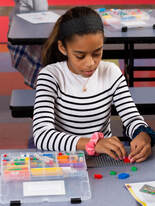 Happy Spring! No April Fooling from us today -- it's time for a new FREE Brick Math Lesson of the Month! This lesson comes from Data and Statistics, which is part of the extension of the Brick Math curriculum into 7th-8th grade math subjects. It shows how to use bricks to model bar graphs and histograms, and maybe most importantly, to understand when to use the different types of graphs depending on the type of data. To get the April 2024 Brick Math Lesson of the Month, "Bar Graphs and Histograms" plus a new lesson each month, click here. Each Lesson of the Month includes the Teacher Lesson Guide as well as the Student Workbook Pages that correspond to the lesson. 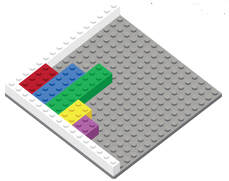 This lesson really uses the bricks well to help students learn how to construct bar graphs and histograms when given a set of data. It reinforces a key piece of information about building graphs: that bar graphs are uses for discrete data and histograms are used for continuous data. Building graphs out of bricks and then drawing those graphs is part of the learning process that gives students confidence in their ability to represent data in graphical form. 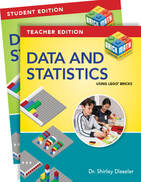 Data and Statistics and Pre-Algebra bring the Brick Math curriculum into 7th and 8th grade math. The topics are perfect for middle school students who are learning the topics for the first time, or for students who need some help learning because a more traditional curriculum has failed them. Brick Math is a complete math curriculum for kindergarten through 8th grade that models the math with bricks. The curriculum is divided into 13 separate content areas: Counting, Addition, Subtraction, Multiplication, Division, Basic Fractions, Basic Measurement, Fraction Multiplication, Fraction Division, Advanced Measurement and Geometry, Decimals, Data and Statistics, and Pre-Algebra. Students can start anywhere in the curriculum. It can be used as a complete math curriculum or brought in as a supplement to help students who aren't having math success with other programs. Brick Math works in many applications: for homeschooling, math intervention, enrichment, and as a whole-school program. Materials are simple and affordable.
For an innovative way to teach and learn K-8th grade math, check brickmath.com. The website includes videos for both teacher training and direct instruction of students. You can learn more about how Brick Math improves students' math test scores and hear what people who are using Brick Math have to say about the program. 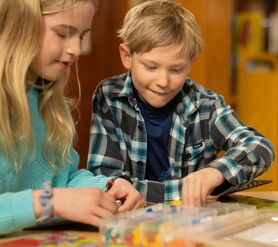 The FREE Brick Math Lesson of the Month for March 2024 comes from Pre-Algebra. It uses bricks to model an ingenious way to teach students how to solve two-step equations and inequalities. To get the March 2024 Brick Math Lesson of the Month, "Solving Two-Step Equations and Inequalities" plus a new lesson each month, click here. Each Lesson of the Month includes the Teacher Lesson Guide as well as the Student Workbook Pages that correspond to the lesson. 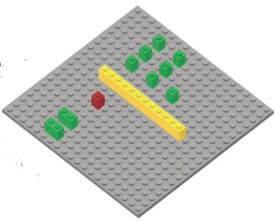 What's ingenious about the Brick Math method is the way specific bricks model specific parts of the equation. In the example shown, the green 1x2 bricks model two positive x terms. The red 1x1 brick models negative 1, and the green 1x1 bricks each model positive 1. The long yellow brick down the center models the equal sign. In this way, the model shows 2x - 1 = 7. Then the lesson shows how to manipulate the bricks to solve the equation. The lesson includes a chart of all the values each brick represents. 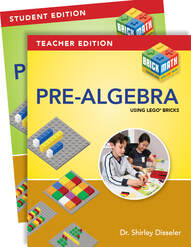 Pre-Algebra sets the stage for all the high school math in the future, and many students learn the rote algorithms but never understand what they mean. Brick Math helps students develop a true understanding of math by approaching it in a concrete way. Brick Math is a complete math curriculum for kindergarten through 8th grade that models the math with bricks. The curriculum is divided into 13 separate content areas: Counting, Addition, Subtraction, Multiplication, Division, Basic Fractions, Basic Measurement, Fraction Multiplication, Fraction Division, Advanced Measurement and Geometry, Decimals, Data and Statistics, and Pre-Algebra. Students can start anywhere in the curriculum. It can be used as a complete math curriculum or brought in as a supplement to help students who aren't having math success with other programs. Brick Math works in many applications: for homeschooling, math intervention, enrichment, and as a whole-school program. Materials are simple and affordable. If you are a math teacher or a parent with a student at home who is learning K-8th grade math, check brickmath.com. The website includes videos for both teacher training and direct instruction of students. You can learn more about how Brick Math improves students' math test scores and hear what people who are using Brick Math have to say about the program. 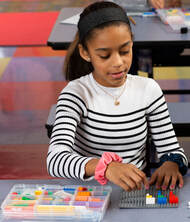 Happy New Year! We're starting off the year with a Brick Math lesson that demonstrates very clearly what "decimal" means. It's taken from Brick Math Decimals Using LEGO® Bricks. Typically, decimals are introduced in 4th grade, and the topic is explored extensively in grades 4 to 6. To get the January 2024 Brick Math Lesson of the Month, "Understanding Decimals," plus a new lesson each month, click here. Each Lesson of the Month includes the Teacher Lesson Guide as well as the Student Workbook Pages that correspond to the lesson. 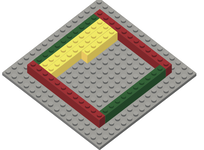 Decimals can be very tricky for students to understand at first. The method shown in this lesson, modeling a decimal within a 10 by 10 grid of bricks, clearly shows 100 as the whole and the decimal as a part of that whole. Like all Brick Math techniques, the models make the math both visual and tactile, which helps many students gain a deeper understanding of the mathematical concepts. Teachers and parents tell us all the time that they always wanted to use LEGO® bricks to teach math, but didn't know how to get started. Brick Math is a complete math curriculum for kindergarten through 8th grade that models the math with bricks. The curriculum is divided into 13 separate topics: Counting, Addition, Subtraction, Multiplication, Division, Basic Fractions, Basic Measurement, Fraction Multiplication, Fraction Division, Advanced Measurement and Geometry, Decimals, Data and Statistics, and Pre-Algebra. Students can start anywhere in the curriculum. It can be used as a complete math curriculum or brought in as a supplement to help students who aren't having math success with other programs. 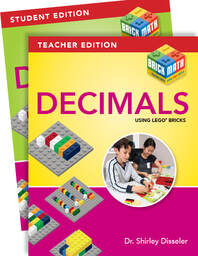 Brick Math works in many applications: for homeschooling, math intervention, enrichment, and as a whole-school program. Materials are simple and affordable. If you are a math teacher or a parent with a student at home who is learning K-8th grade math, check brickmath.com. The website includes videos for both teacher training and direct instruction of students. You can learn more about how Brick Math improves students' math test scores and hear what people who are using Brick Math have to say about the program. 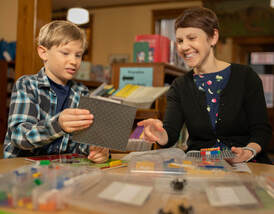 The FREE Brick Math Lesson of the Month for December 2023 is all about a tricky subject: Fraction Division. It comes from Fraction Division Using LEGO® Bricks and helps students understand a math subject area typically taught in grades 4-6. To get the December 2023 Brick Math Lesson of the Month, "Understanding Fraction Division," plus a new lesson each month, click here. Each Lesson of the Month includes the Teacher Lesson Guide as well as the Student Workbook Pages that correspond to the lesson. 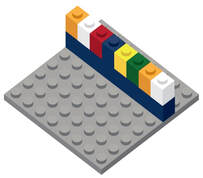 The Lesson of the Month comes from Chapter 1 of Fraction Division. It's a great way to demonstrate the meaning of dividing fractions. Often students don't understand what dividing by a fraction really is, even if they can handle the mathematical algorithm of multiplying by the reciprocal. This lesson clearly shows the concept and relates it to division by whole numbers. 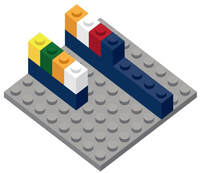 The lesson starts with a review of division by whole numbers, reminding students that "16 divided by 8" means breaking 16 into 8 groups , with 2 in each group. Then the lesson moves to an example with fractions, using the same terminology so students easily make the connection. The brick models help to demonstrate the concept. And this lesson includes two fraction division problems to help your students solidify the learning. Brick Math is a K-8 math curriculum that uses LEGO® bricks to model 13 different math subjects: Counting, Addition, Subtraction, Multiplication, Division, Basic Fractions, Basic Measurement, Fraction Multiplication, Fraction Division, Advanced Measurement and Geometry, Decimals, Data and Statistics, and Pre-Algebra. 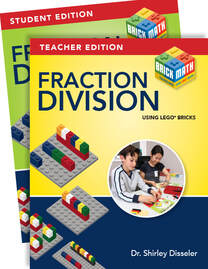 Brick Math works in many applications: for homeschooling, math intervention, enrichment, and as a whole-school program. Materials are simple and affordable. If you are a math teacher or a parent with a student at home who is learning K-8th grade math, check brickmath.com. The website includes videos for both teacher training and direct instruction of students. You can learn more about how Brick Math improves students' math test scores and hear what people who are using Brick Math have to say about the program. 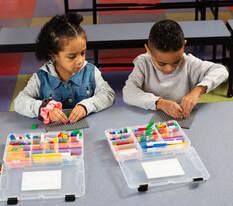 The October 2023 FREE Brick Math Lesson of the Month comes from Addition Using LEGO® Bricks. It helps students understand that there are many ways to combine numbers. To get the October 2023 Brick Math Lesson of the Month, "How Many Ways to Make 6?" plus a new lesson each month, click here. Each Lesson of the Month includes the Teacher Lesson Guide as well as the Student Workbook Pages that correspond to the lesson. 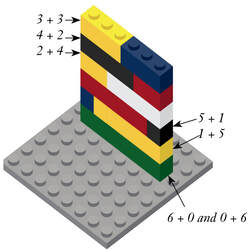 In the lesson, students model all the different ways numbers can be combined that total 6: 6 + 0, 5 + 1, 4 + 2, etc. Building a tower of bricks, students begin to understand what addition really means. It's a foundational skill that early learners need to have, and this Brick Math lesson turns the numbers from abstract to concrete. 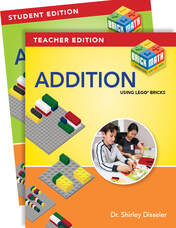 Brick Math is a K-8 math curriculum that uses LEGO® bricks to model 13 different math subjects: Counting, Addition, Subtraction, Multiplication, Division, Basic Fractions, Basic Measurement, Fraction Multiplication, Fraction Division, Advanced Measurement and Geometry, Decimals, Data and Statistics, and Pre-Algebra. Data and Statistics and Pre-Algebra expand the Brick Math curriculum to include grades 7 - 8. Brick Math works in many applications: for homeschooling, math intervention, enrichment, and as a whole-school program. Materials are simple and affordable. If you are a math teacher or a parent with a student at home who is learning K-8th grade math, check brickmath.com. The website includes videos for both teacher training and direct instruction of students. You can learn more about how Brick Math improves students' math test scores and hear what people who are using Brick Math have to say about the program.
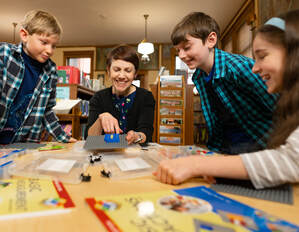 The Brick Math FREE Lesson of the Month for September 2023 is about Mixed Numbers and is taken from Basic Fractions Using LEGO® Bricks. The concept of a mixed number (a whole number and a fractional part) can be difficult for students to grasp, but modeling with bricks makes it so easy to learn. To get the September 2023 Brick Math Lesson of the Month, "Mixed Numbers," plus a new lesson each month, click here. Each Lesson of the Month includes the Teacher Lesson Guide as well as the Student Workbook Pages that correspond to the lesson. 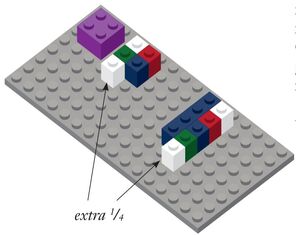 The lesson on mixed numbers first shows that a whole number can be divided into equal parts, and then shows how one more of that fractional part is added to the whole to make the mixed number. It's a very effective way to teach the concept of mixed numbers. It also shows the power of the Brick Math program, which makes math concepts visual and tactile so all students can learn them. 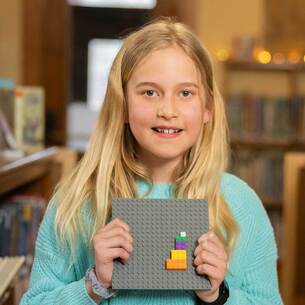 Brick Math is a K-8 math curriculum that uses LEGO® bricks to model 13 different math subjects: Counting, Addition, Subtraction, Multiplication, Division, Basic Fractions, Basic Measurement, Fraction Multiplication, Fraction Division, Advanced Measurement and Geometry, Decimals, Data and Statistics, and Pre-Algebra. Data and Statistics and Pre-Algebra expand the Brick Math curriculum to include grades 7 - 8. Brick Math works in many applications: for homeschooling, math intervention, enrichment, and as a whole-school program. Materials are simple and affordable. If you are a math teacher or a parent with a student at home who is learning K-8th grade math, check brickmath.com. The website includes videos for both teacher training and direct instruction of students. You can learn more about how Brick Math improves students' math test scores and hear what people who are using Brick Math have to say about the program.
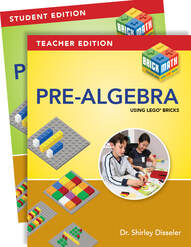 The Brick Math FREE Lesson of the Month for August 2023, "Absolute Value," is from our brand-new book, Pre-Algebra Using LEGO® Bricks. It's a great way to demonstrate the meaning of absolute value when you begin to introduce the concept. To get the August 2023 Brick Math Lesson of the Month, "Absolute Value," plus a new lesson each month, click here. Each Lesson of the Month includes the Teacher Lesson Guide as well as the Student Workbook pages that correspond to the lesson. 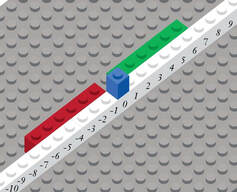 The lesson demonstrates absolute value using a number line built from bricks. Each stud represents a number, with a blue 1x1 brick in the center of the line to represent zero. Green bricks represent positive values on the number line, and red bricks represent negative values. The lesson teaches the vocabulary of absolute value, showing the "integer value" of numbers. Once students understand the concept of absolute value, they can move on to performing arithmetic operations with them. 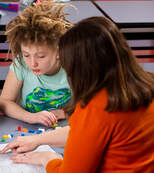 Brick Math is a K-8 math curriculum that uses LEGO® bricks to model 13 different math subjects: Counting, Addition, Subtraction, Multiplication, Division, Basic Fractions, Basic Measurement, Fraction Multiplication, Fraction Division, Advanced Measurement and Geometry, Decimals, Data and Statistics, and Pre-Algebra. Data and Statistics and Pre-Algebra expand the Brick Math curriculum to include grades 7 - 8. Brick Math works in many applications: for homeschooling, math intervention, enrichment, and as a whole-school program. Materials are simple and affordable. If you are a math teacher or a parent with a student at home who is learning K-8th grade math, check brickmath.com. The website includes videos for both teacher training and direct instruction of students. You can learn more about how Brick Math improves students' math test scores and hear what people who are using Brick Math have to say about the program. 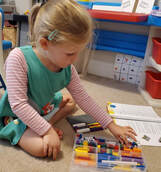 The June 2023 Brick Math Lesson of the Month shows how to teach early learners the very basics of understanding square numbers. It's part of the Counting and Cardinality Using LEGO® Bricks curriculum. To get the June 2023 Brick Math Lesson of the Month, "Square Number Concepts," plus a new lesson each month, click here. Each Lesson of the Month includes the Teacher Lesson Guide as well as the Student Workbook pages that correspond to the lesson. 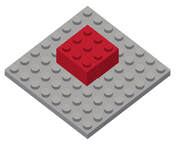 In the lesson, students build 2-stud, 4-stud, and 9-stud configurations with bricks. They are encouraged to see that 4-stud and 9-studs can be modeled in the shape of a square, and that there are 2 and 3 studs on each side of the square. In this way, the concept of square numbers is introduced, and will be returned to later when students learn multiplication. 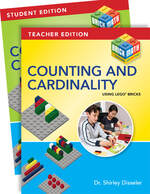 The importance of building skills in math over time can't be stressed enough. This lesson is a great example of how to start from the earliest years, using mathematical terminology to teach concepts young students can grasp. Incorporating bricks to make the lesson visual helps students build math knowledge that will last a lifetime. Brick Math is a K-6 math curriculum that uses LEGO® bricks to model 11 different math subjects: Counting, Addition, Subtraction, Multiplication, Division, Basic Fractions, Basic Measurement, Fraction Multiplication, Fraction Division, Advanced Measurement and Geometry, and Decimals. 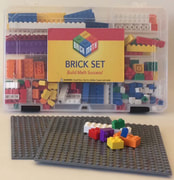 This year, the program will expand to include grades 6 - 8, with the additional subjects Data and Statistics, Pre-Algebra, and Ratios and Proportions. Brick Math works in many applications: for homeschooling, math intervention, enrichment, and as a whole-school program. Materials are simple and affordable. If you are a math teacher or a parent with a student at home who is learning K-8th grade math, check brickmath.com. The website includes videos for both teacher training and direct instruction of students. You can learn more about how Brick Math improves students' math test scores and hear what people who are using Brick Math have to say about the program. |
Categories
All
Archives
July 2024
|

